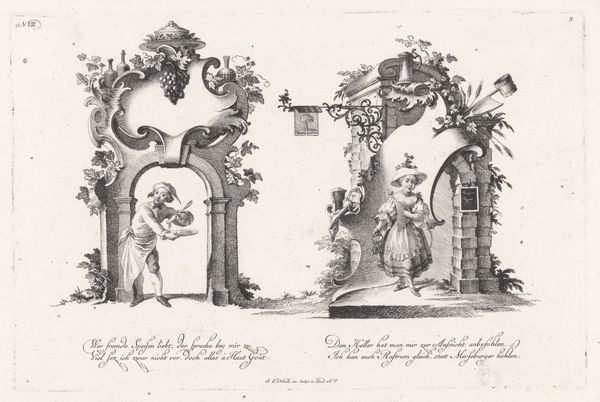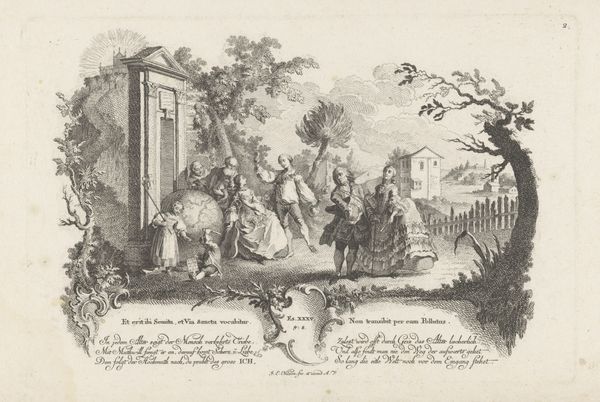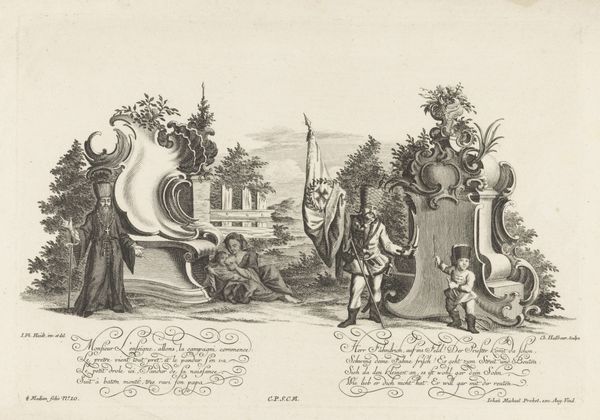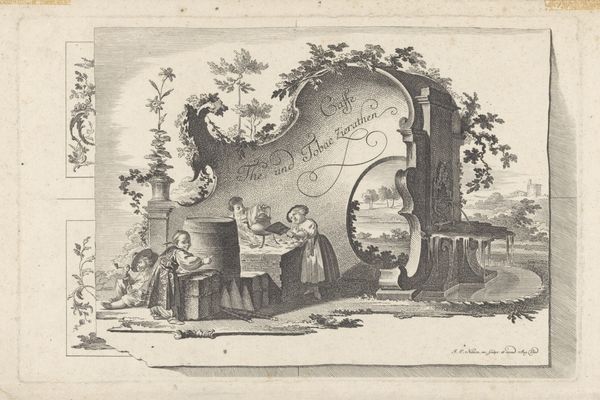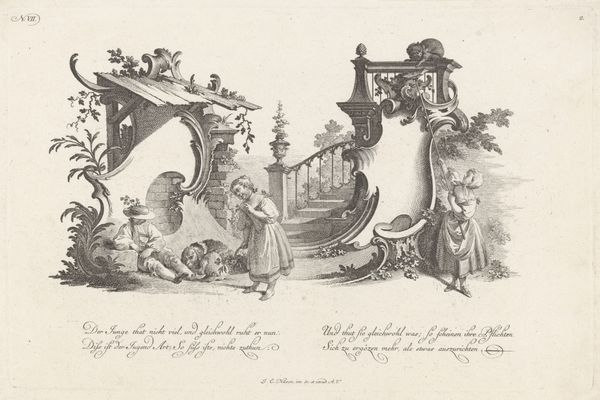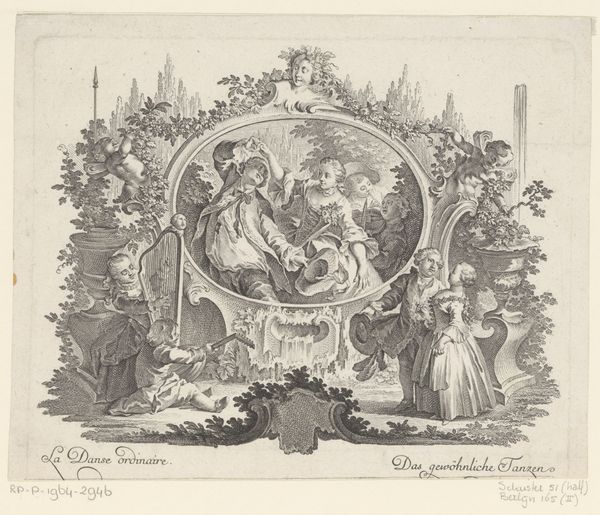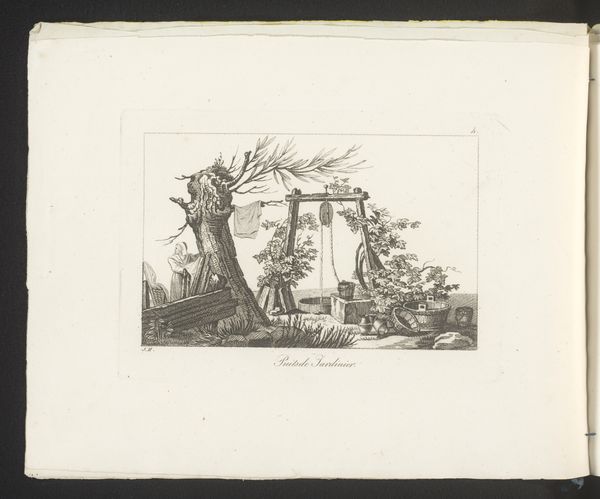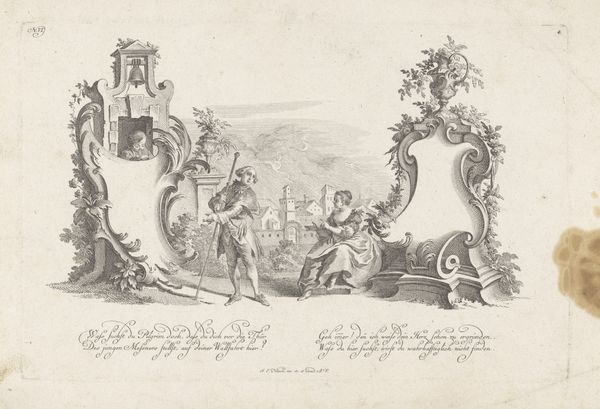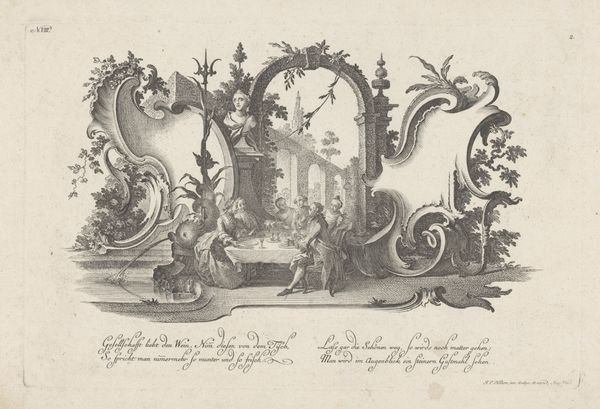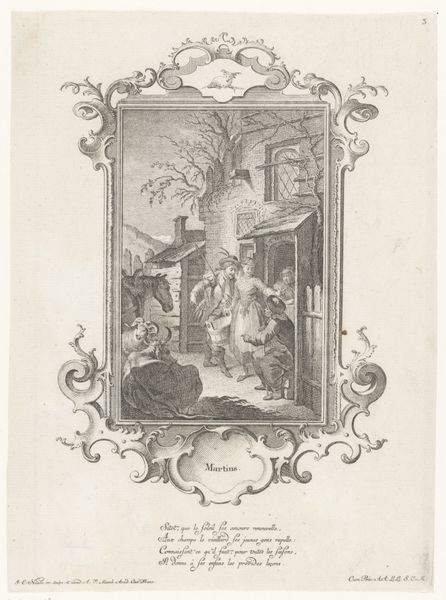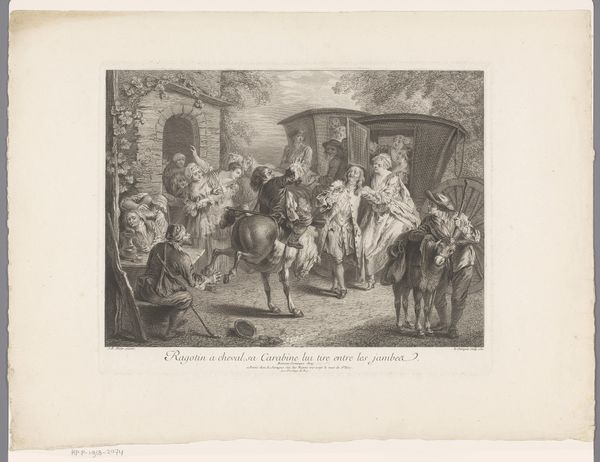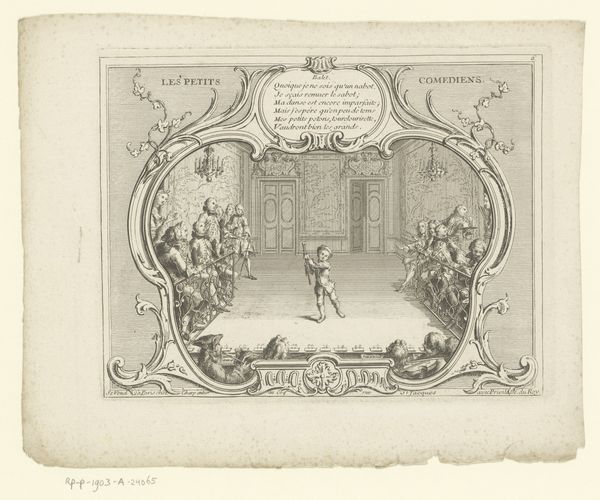
drawing, print, engraving
#
drawing
#
baroque
# print
#
pen sketch
#
cityscape
#
genre-painting
#
engraving
Dimensions: height 186 mm, width 286 mm
Copyright: Rijks Museum: Open Domain
Curator: This engraving, "Koffiehuis met ruziënd paar," or "Coffee House with Quarrelling Couple," was created by Johann Esaias Nilson sometime between 1731 and 1788. The work offers us a glimpse into eighteenth-century social life. What’s your first reaction to it? Editor: Well, first, there's so much detail rendered through delicate lines and shading that give a rich sense of texture. The ornate architectural flourishes of the coffee house are a stark contrast to the more immediate portrayal of everyday human interaction playing out within the composition. Curator: Yes, look closer at that ornamentation, the decorative framing! The coffee house, labeled "Neues Caffehaus" at its front, seems to be as much about status as it is about service. Consider how printed images like this would have circulated; influencing the tastes and aspirations of a burgeoning middle class, perhaps. Editor: That’s a great point! Thinking about materiality, the availability and distribution of these engravings, as prints, directly relates to expanding consumer culture. More people could have access to artworks, or at least images of artworks. Beyond that, it would be interesting to see how Nilson’s engraving practice would function. Does it reflect that of an artisan or artist? What kind of social class does it reflect? What type of training would Nilson require to create it? Curator: Nilson's print stands as a wonderful example of genre painting becoming a commercial commodity, shaping popular understandings of social spaces in that era. You see, I'm wondering what the museum acquiring and displaying such a print does to our understanding of the time when coffee houses flourished, acting as important social and cultural hubs of public life in many European cities. It shows the commercial nature of socializing, too. Editor: Indeed. I find it equally engaging to contemplate the materials themselves: the paper, the ink, and the very act of inscription as a kind of labor—almost mass production of an image. Looking at art in terms of production lets you recontextualize its function. The image isn't just to be looked at. It’s to sell. Curator: Very true. This work presents layered entry points into our cultural and artistic history. Editor: It does prompt you to think about more than what meets the eye, beyond the initial surface.
Comments
No comments
Be the first to comment and join the conversation on the ultimate creative platform.
